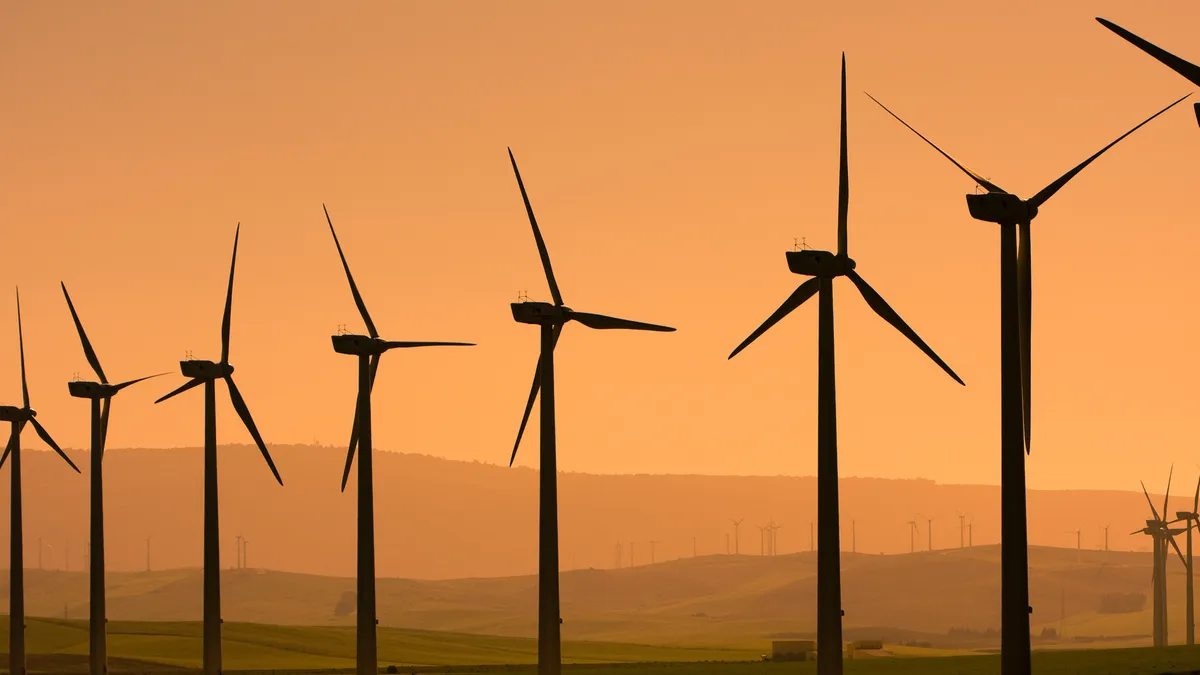Dive Brief:
- 23.7 GW of new U.S. electric generating capacity, mostly from wind, natural gas and solar, are expected in 2019, according to the U.S. Energy Information Administration (EIA) inventory of electric generators.
- In addition, EIA data shows 8 GW of primarily coal, nuclear and natural gas generation are expected to retire this year, though that number could increase as utilities continue to evaluate their generating portfolios.
- The expected retirements include Arizona's 2.3 GW Navajo coal-burning power plant, Exelon's 819 MW Three Mile Island nuclear power plant in Pennsylvania and Entergy's 677 MW Pilgrim nuclear power station in Massachusetts.
Dive Insight:
Cheaper prices of natural gas and renewable energy have impacted the competitiveness of more traditional generation fuels.
Renewable additions are projected to more than double gas in 2019. Last year, natural gas capacity additions outpaced renewable energy additions for the first time since 2013. 2018 was also a landmark year for new capacity additions, as EIA expected nearly 32 GW of new capacity — the most in a decade.
Projected capacity additions for 2019
| Generation Type | Total New Utility-Scale Capacity | Top 3 States for Additions |
|---|---|---|
| Natural Gas | 7.5 GW | Pennsylvania, Florida, Louisiana |
| Solar Photovoltaics | 4.3 GW | Texas, California, North Carolina |
| Wind | 10.9 GW | Texas, Iowa, Illinois |
The estimates, based on EIA data, do not include additions in the residential and commercial solar sectors, which are expected to be an additional 3.9 GW by the end of 2019.
In 2019, EIA is tracking about 6.1 GW of combined-cycle gas plants and 1.4 GW of combustion-turbine gas plants, expected to be mostly online by June, in order to meet high energy demand during the summer peak. The rest of the expected additions include wind, solar and about 2% of other renewable and battery storage capacity.
Renewable capacity typically comes online at the end of the year, according to the EIA. This matches the upcoming changes in renewable energy tax credits. The wind production tax credit will phase out completely at the end of the year from its current status at 40% of 2015 levels. On the solar side, this is the last year for a full 30% investment tax credit for developing solar energy systems, which will begin to phase down in 2020.
Utility integrated resource plans (IRPs) are beginning to show that renewables can beat out older coal plants, as the Northern Indiana Public Service Company demonstrated through its 2018 IRP analysis last fall, assessing a scenario to eliminate the resource by 2028.
Half of the 4.5 GW of coal-fired capacity expected to retire in 2019 comes from the Navajo Generation Station (NGS), which has not found enough customers for its power generation despite support from a number of groups and the Trump administration to keep it open. Last September, private equity firm Middle River Power dropped its bid to purchase the plant.
In addition, the Pilgrim nuclear plant, set to retire in May, and Three Mile Island, scheduled to retire in September, follow announcements from the plant operators of "severe economic challenges." Exelon's Three Mile Island failed to clear the PJM Interconnection capacity market auction in 2017 and Entergy based the decision for Pilgrim on a range of financial factors, including low current and forecast wholesale energy prices.
While the Trump administration has worked to support existing coal and nuclear power plants and to create economic conditions to add new coal and nuclear capacity, trends are pointing away from nuclear and coal additions.
"I don't think there are any trends in the current electricity market that favor the idea of building new coal or nuclear power plants," Tim Fox, vice president of ClearView Energy Partners, told Utility Dive.
The natural gas plants set for retirement largely consist of steam turbine plants, mostly located in California. They are older units that came online more than 50 years ago. Other capacity retirements for the year include a hydroelectric plant in Washington state and smaller renewable and petroleum capacity.
CORRECTION: A previous version of this article misstated the top states for new wind capacity additions. They are Texas, Iowa and Illinois.














